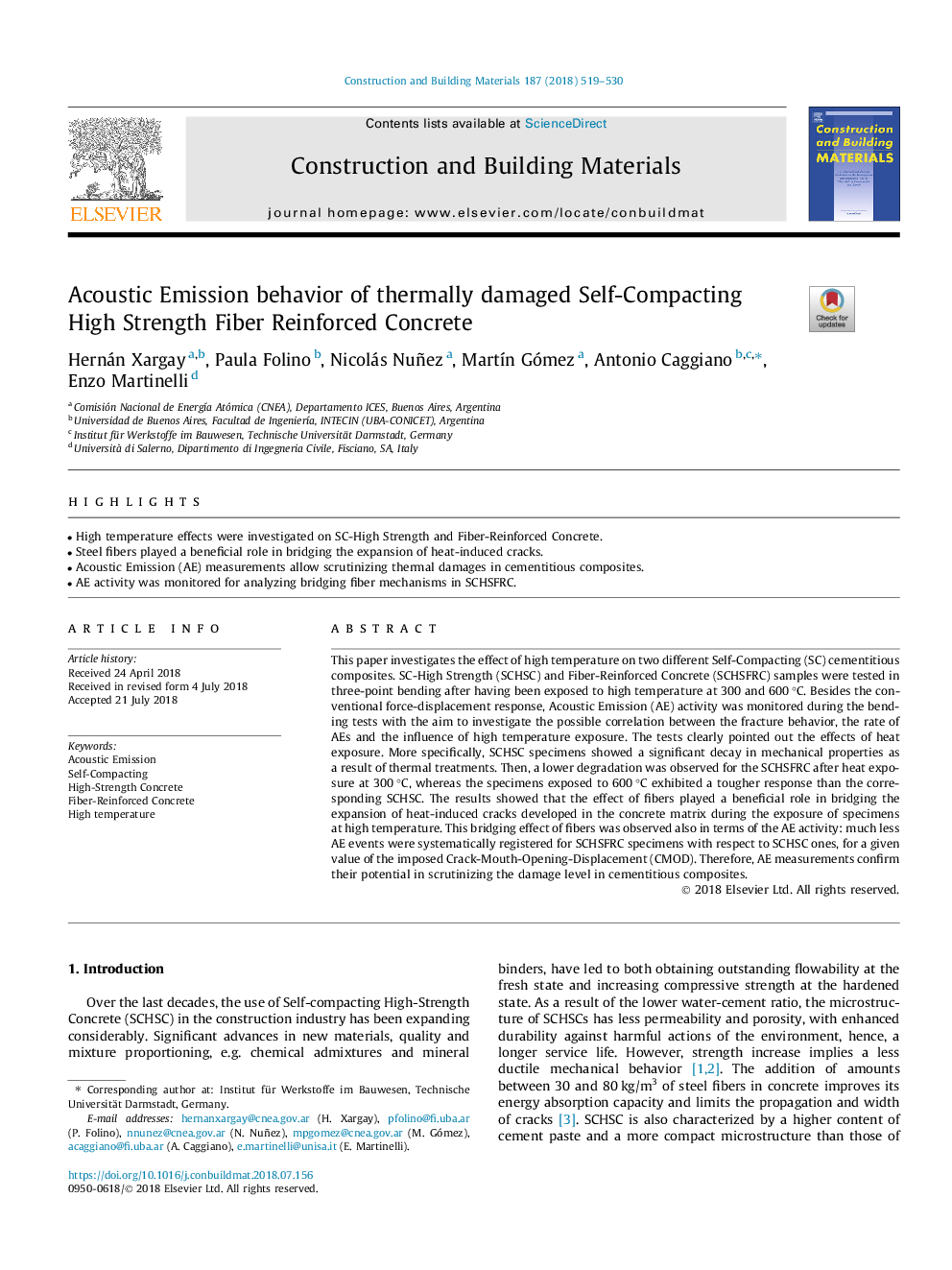| Article ID | Journal | Published Year | Pages | File Type |
|---|---|---|---|---|
| 6711412 | Construction and Building Materials | 2018 | 12 Pages |
Abstract
This paper investigates the effect of high temperature on two different Self-Compacting (SC) cementitious composites. SC-High Strength (SCHSC) and Fiber-Reinforced Concrete (SCHSFRC) samples were tested in three-point bending after having been exposed to high temperature at 300 and 600â¯Â°C. Besides the conventional force-displacement response, Acoustic Emission (AE) activity was monitored during the bending tests with the aim to investigate the possible correlation between the fracture behavior, the rate of AEs and the influence of high temperature exposure. The tests clearly pointed out the effects of heat exposure. More specifically, SCHSC specimens showed a significant decay in mechanical properties as a result of thermal treatments. Then, a lower degradation was observed for the SCHSFRC after heat exposure at 300â¯Â°C, whereas the specimens exposed to 600â¯Â°C exhibited a tougher response than the corresponding SCHSC. The results showed that the effect of fibers played a beneficial role in bridging the expansion of heat-induced cracks developed in the concrete matrix during the exposure of specimens at high temperature. This bridging effect of fibers was observed also in terms of the AE activity: much less AE events were systematically registered for SCHSFRC specimens with respect to SCHSC ones, for a given value of the imposed Crack-Mouth-Opening-Displacement (CMOD). Therefore, AE measurements confirm their potential in scrutinizing the damage level in cementitious composites.
Keywords
Related Topics
Physical Sciences and Engineering
Engineering
Civil and Structural Engineering
Authors
Hernán Xargay, Paula Folino, Nicolás Nuñez, MartÃn Gómez, Antonio Caggiano, Enzo Martinelli,
